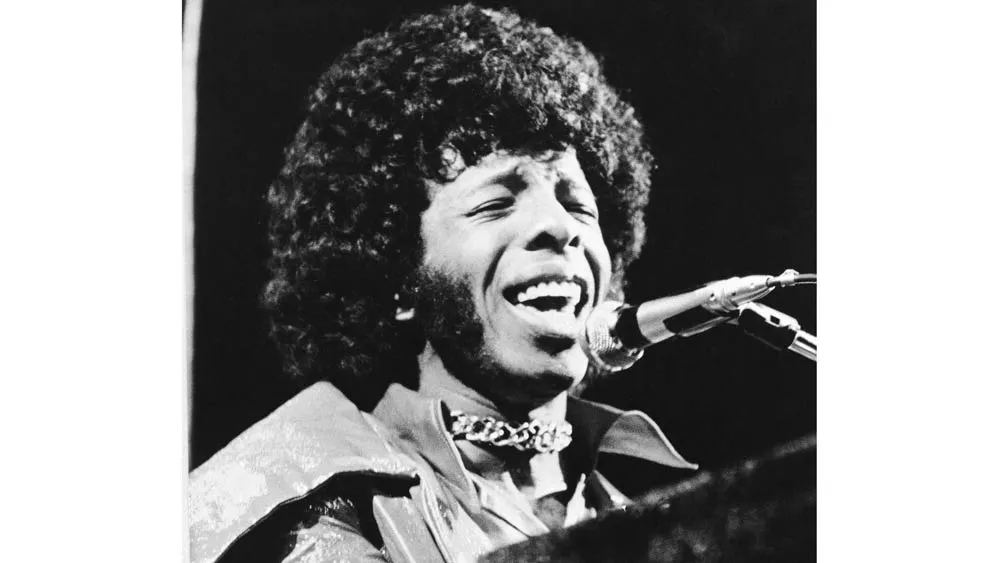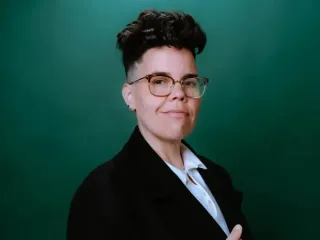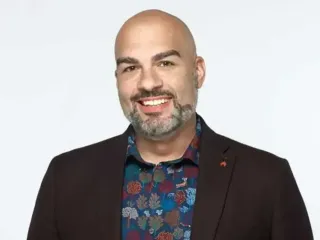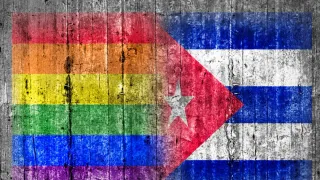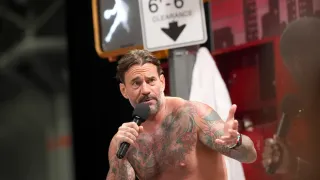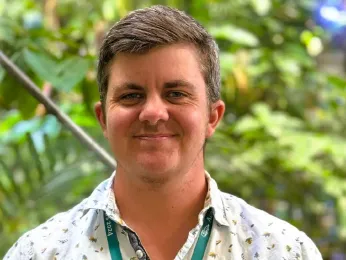
Jul 16
Guest Opinion: Embracing my gender identity at work helps me lead with empathy
Leo Chapman READ TIME: 5 MIN.
On January 20, President Donald Trump signed an executive order stating that the federal government of the United States would only recognize two sexes, male and female, and that a person’s sex was unchangeable. This order effectively began the attempted erasure of trans and gender-nonconforming people at a federal level, and the attack on freedom of gender identity has continued to escalate. I have been grappling with the possible implications of these orders on me as a transgender person, and the understanding that this order has the support of many people across the country.
During this time, I feel incredibly privileged not only to be living and working in San Francisco, but also to have been born and raised in this city. My experiences in coming out as queer during college, and later coming out as transgender, have been heavily impacted and shaped by my environment and the general sentiment of the people around me. Despite the relative support that LGBTQ+ people experience in cities like mine, I still remember realizing what it meant to be visibly myself when I came out as queer.
After cutting my hair short for the first time at 19, I began to notice the change in how people perceived me, and how that impacted our interactions. Learning which spaces are safe or unsafe has been an iterative process with lots of trial and error, as even driving across my own state could land me in an uncomfortable situation at a gas station or restaurant bathroom. Being easily identifiable as gay was never an issue for me, although I've always known that, if needed, I could take steps to hide my identity. I remember scrolling through job listings across the country and clearly noting which roles I might be more likely to land if my interviews took place purely over Zoom, or if dressed in more "feminine" clothing, or even if I grew my hair longer again. While the privilege of being able to pass as heterosexual might have allowed me to enter those spaces, I feel grateful that I was able to navigate my career without facing that decision.
As I started to move through the professional world of environmental conservation, I felt lucky to be able to be openly queer in my workplace. I didn’t worry about being openly gay or whether being open would lead to discrimination against me. However, I quickly learned to be cautious about expressing my identity in more overt ways. I could sense the discomfort of my supervisors and peers during my tenure at an organization where my queer identity was tolerated, not celebrated. I could tell that being authentically myself was threatening to the people around me, and I made myself as small as possible to avoid offending anyone. I assumed that tolerance was the best I could hope for.
During this time, I remember seeing a Pride Month campaign from the California Academy of Sciences, a museum and aquarium in Golden Gate Park, and 500 Queer Scientists featuring a different LGBTQ+ scientist every day of the month. At a time when I felt unwelcome at my own organization (even in a liberal city!), seeing this visible celebration of queer people helped me to realize that I deserved more than tolerance, and that I deserved a workplace where I could be valued for all of the parts of my identity.
Months later, I got a role at the California Academy of Sciences. In the midst of a truly welcoming environment I was finally able to start understanding how much of the “tolerance” I had internalized. My self-worth had eroded when exposed to a community that did not see my value or understand what my unique perspective could add to our work. From the mention of the Academy Pride employee resource group during orientation to the encouragement to add pronouns to my name tag and email signature, and not least of all the presence of so many other out and proud queer people, I saw immediately that this was an institution working to create safe and welcoming spaces for all members of the community. No where was that more apparent than our annual public Pride NightLife event, where the museum is transformed into a space dedicated to celebrating queer joy with staff, visitors, and the community.
Over time, I began to see that the parts of my personality and identity that had been silenced in deference to the comfort of others were, in fact, some of my greatest strengths. I had muted my voice, stopped standing up for the things that mattered most to me, and allowed others to shape the way that I viewed myself. Feeling truly safe in bringing my whole identity into my work has allowed me to be the bravest version of myself. I work hard to model the empathy-centered leadership that is needed to create spaces where my staff can be fully themselves, because I know firsthand how important it has been for me. I also see every day that the work that we accomplish together is so much richer and more meaningful because of our commitment to being authentic with one another.
Coming to the understanding that I am trans was something that happened slowly, even in this new, supportive work environment. I spent years thinking about what this could mean for me before finally realizing that I wasn’t deciding if I was trans, I was deciding if I would accept who I am and allow myself to grow into that identity. The opportunity to meet and work alongside so many other queer and gender-nonconforming people has been essential in my evolving understanding of myself. Being at the Academy during this time and seeing the ways in which our community and institution support LGBTQ+ people makes me incredibly proud to work where I do, and helped lay a critical foundation for me to feel comfortable coming out as transgender in a professional setting.
Transitioning has been both a relief and a roller coaster. There is so much joy in getting to know yourself better and looking more like yourself every day. But, there remains an undercurrent of fear and isolation which has only been escalated by the attacks of the current administration on our community. Now, more than ever, we need to stand up to say that we will not allow transgender people to be erased. Visibility is resistance, and spotlighting both individuals and organizations who are willing to fight for this community will make a difference for people who need to know that they are not alone. Even when we feel the most powerless, we have the ability to look out for one another, and to take time to celebrate the things that make us invaluable in the work that needs to be done to create the kind of world that we want to live in.
Leo Chapman (they/them) is the senior manager, volunteer programs, at the California Academy of Sciences. Chapman was born and raised in San Francisco, and their love of animals sparked a career in science and conservation. They are passionate about creating accessible and equitable programming, opening up pathways to careers in STEM, and see volunteer programming as an important opportunity for furthering that work. In their free time, Chapman enjoys spending time with family, being outdoors, and exploring with their dog.
